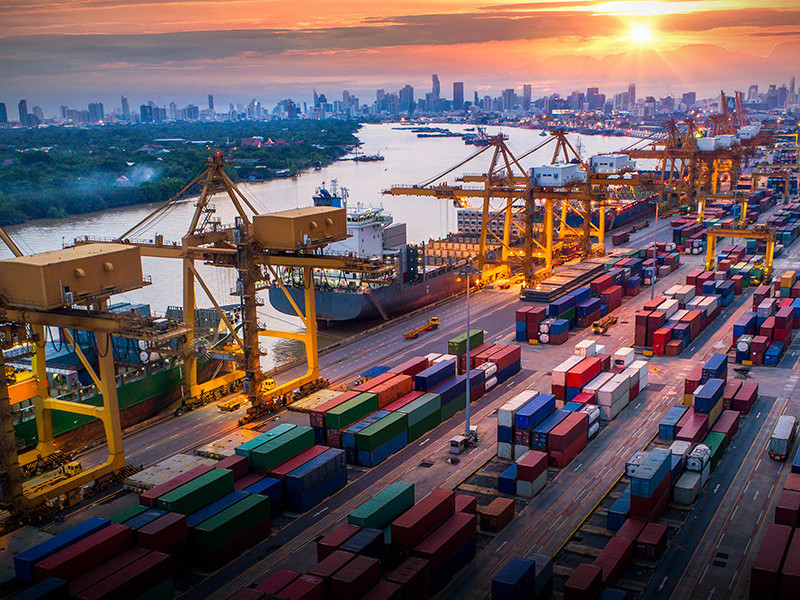
The benefits of free trade are based on the classic comparative advantage trade theory, as originally espoused by the English economist David Ricardo in the early 19th century.
Consumers, producers and economic growth all benefit on average from free trade. The winners from free trade outweigh the losers. Without making interpersonal comparisons, the logic of other economists was that the losers from free trade would be subsidised at the expense of the winners and that there would still be gains left over. Such a scheme is superficial on its face and not very practical.
The benefits of trade account to everyone – importers, exporters, consumers and producers of all trading nations. The consumption of foreign-made, more economically produced products make everyone – consumers and producers – better off. Each and every impediment to trade, irrespective of which country imposes the impediment, hurts both exporting and importing countries. The benefits of trade are best measured as total trade – exports minus imports.
Ignorance of the benefits of trade is probably the only product that is freely traded without borders. Governments far and wide believe that imposing unanswered protectionist measures advantages their economy at the expense of their trading partners (the concept of a zero-sum game). Trade and protectionist measures are not about trade balance (exports minus imports) and employment (jobs).
Each country exports some of the products it produces to earn the wherewithal to pay for imports from other countries. This relationship between exports and imports among countries is no different than the relationship between income and spending amongst individuals.
Income is earned by producing goods, which is sold in order to buy goods others produce. A country's imports equal its exports without capital flows. You need to import in order to export and vice versa. What has been missing from the current debate is a clear-eyed objective assessment of tariffs. A tariff is, after all, only a tax on imported goods. Other restrictive trade measures include quotas, embargoes, currency manipulation, and non-tariff barriers.
Technically, tariff is a set of taxes on imported goods. In being a tax, like any other tax, tariff has no prima facie reason to be excluded from consideration when the topic is, how best to construct a tax and fiscal regime for a country.
Free trade, ie, no tariff or non-tariff barriers, implies that governments must rely exclusively on other forms of taxation, such as those imposed on the domestic population – income, sales, excise taxes and the like. Are these domestic forms of taxation better than the tariff? The answer lies in Lerner's symmetry theorem – which is math, not ideology. It simply states that there is a precise correspondence between taxes on imports (tariffs) and taxes on exports. Tariff on imports is conceptually the same as the tax on exports. As such the tariff, whether imposed by either country, hurts both domestic and foreign consumers of imports and foreign and domestic producers of exports.
The most obvious reason to impose tariffs is to raise revenues. How much revenue tariffs can produce is a highly variegated matter. There are duty rates on goods that can be high without discouraging imports and prospects for sale, and there are duty rates that can be low, yet large enough to cut off all imports. The Laffer Curve optimal rate of taxation – the point at which either raising or lowering the duty would decrease revenue – is unique in each case and context of an imported good. In practical terms, it is impossible to produce a truly revenue-maximising tariff policy.
Protected tariff for the domestic industry cramps the competitiveness of all businesses in the country. These businesses become less competitive against foreign competition.
This, in turn, increases and intensifies the call for tariff protection from other imports and for more encouragement of domestic exports. If further protection comes, the original problem worsens.
Protective tariffs also invite evasion and crime. Non-protective tariffs, by definition, coincide with the licit trading activity, in that they are productive of revenue. When protective tariffs are introduced, they cause a pile-up of foreign inventories of otherwise salable goods in the importing country. Intrepidness in bringing these goods to market in the country "undocumented", as it were, is stimulated.
The lesson is that trade protection measures destroy the gains from trade by lowering total trade (exports plus imports), hurting importers, exporters, consumers and producers. It also hurts economic growth. By virtue of these inefficiencies, protective tariffs result in decrease in individual and corporate income. In turn, there are lower tax receipts from those non-tariff sources. As it was in the past, so will it be in the future.
Given that the government presumably has to tax something, the lowest, load-bearing rate on any and all sources is surely the most effective tax system from the perspective of economic efficiency. The best compromise is for a tax system that prioritises the size and vitality of the real economy. This would probably take the form of a modest properly sensitive list of tariff duties in exchange for greatly reduced internal taxation.
The writer is a philanthropist and an economist based in Belgium

1725354252-0/Untitled-design-(5)1725354252-0-405x300.webp)
1732099866-0/adele-(3)1732099866-0-165x106.webp)




1732084432-0/Untitled-design-(63)1732084432-0-270x192.webp)










COMMENTS
Comments are moderated and generally will be posted if they are on-topic and not abusive.
For more information, please see our Comments FAQ